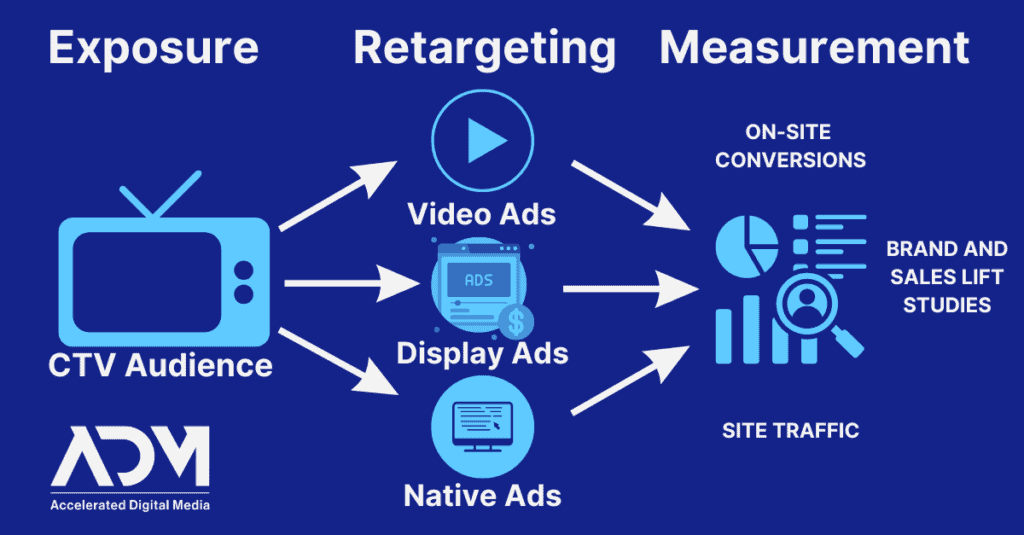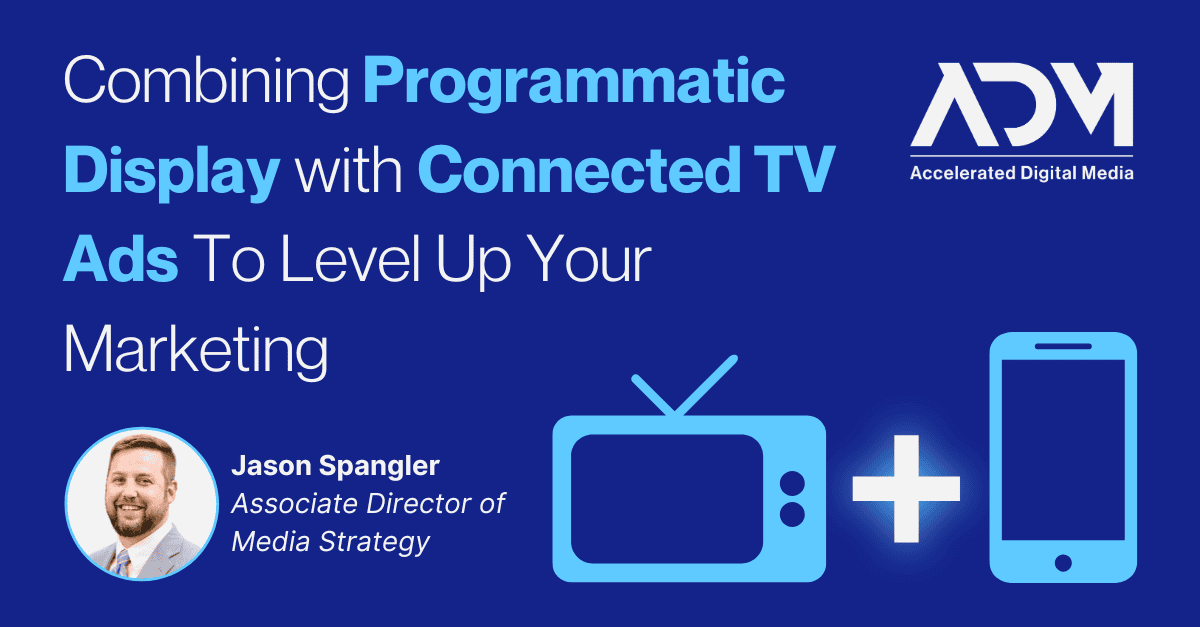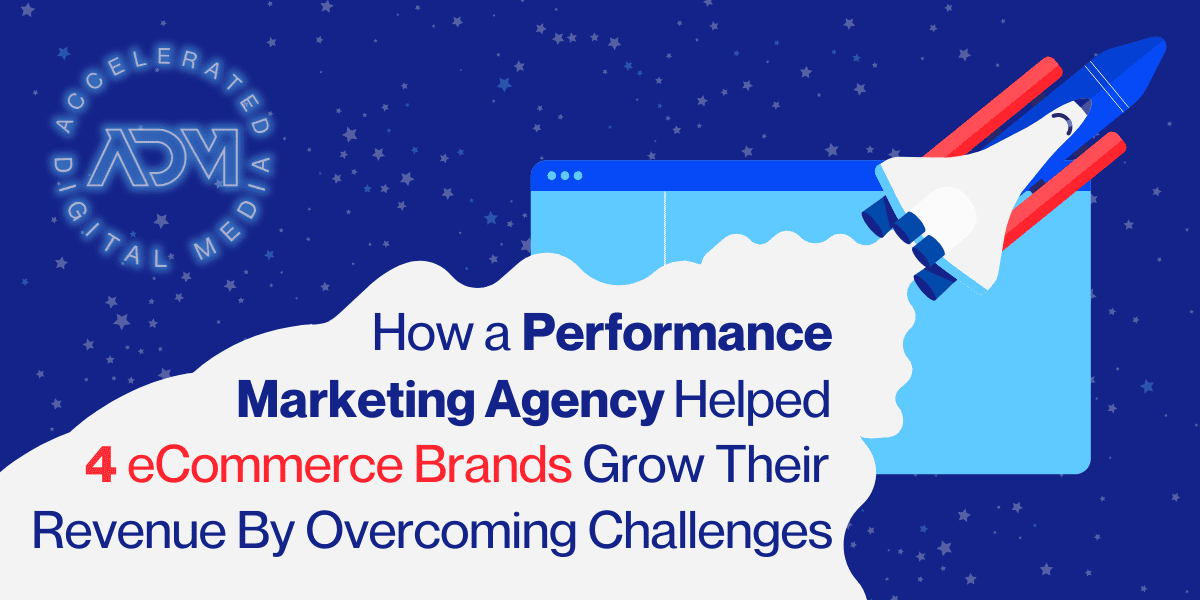We often call “programmatic advertising” a “big tent” term, in that it encompasses a range of advertising formats across a wide array of delivery mediums—from website display to streaming video. They’re united under that term only by the way advertisers bid for placements. But with the right strategy, you can make different types of programmatic advertising work together.
Programmatic display allows advertisers to reach individuals across websites when they’re not on platforms like Google or Facebook. Its targeting capabilities are highly granular. You can leverage impressive first-party, in-market, or demographic audience segments or utilize contextual targeting to ensure display ads appear in the most relevant pages and environments.
Connected TV takes the targeting and audience advantages of programmatic display and allows brands to reach individuals with high-quality, living-room inventory that reaches their audience as they relax with a Hulu binge (or whichever streaming platform they prefer).
In this blog, we’ll discuss how these two programmatic advertising techniques can work together to expedite and drive the conversion process.
Why Connected TV and Programmatic Display Work So Well Together
Combining connected TV and programmatic display advertising is effective for advertisers because it allows them to reach the same individuals at different waypoints along the sales funnel to strengthen their odds of a conversion. By leveraging premium connected platforms like Hulu and Peacock, advertisers can reach users in a relaxed state where they’re more receptive to learning about new brands. Advertisers can then exclusively retarget viewers of those connected TV ads with high-quality display placements across popular websites such as Zillow, Weather.com, and CNN, when users are in a better mode to research further or take action.
This strategy not only enhances the reach and efficiency of campaigns, but also expedites conversion funnels, from clicks to site visits to conversions, creating a powerful and valuable advertising synergy. Letting the two mediums work together ensures that campaigns cover broader audience segments while also facilitating better tracking and analysis of consumer behavior and campaign performance.
To create a combined program strategy like this, we recommend using the same demand-side platform (DSP) whenever possible to deploy across channels—while possible with multiple ad platforms, retargeting will be less seamless and it will be harder to measure success and cull insights.
- We utilize StackAdapt to ensure shared learnings and no gaps across connected TV-to-website-to-conversion journey. Attribution for connected TV is made possible by further extending qualified users to your other programmatic channels to know exactly who has watched your connected TV ad and later performed an action on your website:

Develop Consistent Creative Across Programmatic Channels
While different programmatic advertising mediums serve different advertising purposes, your creative approach should still be consistent when using them in combination. Similar messaging and branding should be present across the full funnel strategy, from connected video ads to retargeting display ads.
While Connected TV has the ability to speak directly towards target audiences with visual and script elements, the Display creative should continue emphasizing the consumer journey by focusing on calls-to-action that engage and provide further value. That can be done by using your best-tested and proven messaging, adding additional information about your offerings, or emphasizing on credibility (through things like reviews and great product ratings).
Sequential messaging across creative can reduce the steps between awareness and conversion. For example, while a Connected TV ad may highlight broader brand awareness, like an athleticwear company showing athletes in action, a Display ad can highlight a specific product, feature a direct call to action, and emphasize promotional details and a button click directly to a product page. In this example, the video ad is raising awareness while the display is encouraging and enabling action, creating a seamless shopping experience.
Measuring Results Across Different Programmatic Channels
Measuring success across all platforms is critical, particularly when it comes to higher-funnel channels like connected TV where success isn’t as simple as a click or conversion. We focus not just on impressions at the connected TV level, but follow them all the way down to site-side conversions among the viewing audience—which can be tracked through programmatic display retargeting ads. Indeed, combining programmatic display ads with connected TV can close some of the attribution blind spots that typically exist with top-of-funnel marketing approaches.
For Connected TV, we closely measure brand keyword search volume within Google Ads and monitor for noticeable changes in direct site traffic (using Google Analytics) in the locations where the connected TV ads are running. Lastly, first-party pixels on the site can pull in transaction ID and revenue passback—this largely incorporates the Display component of the campaign, as well as tying IP addresses to site visits
Working With a Programmatic Advertising Agency
Better programmatic advertising revolves around taking advantage of the specific approaches that will work for your brand and building a cohesive strategy across mediums. It relies not just on expert knowledge of the different mediums and how they can be deployed, but how they can work together to drive more conversions. And measurement is key to that: Properly attributing success and gleaning insights from the data will allow you to scale your effective advertising approaches.
If you’re looking for a performance marketing partner that can handle all the intricacies of expert-level programmatic advertising, consider reaching out to the ADM team today to set up a conversation:




